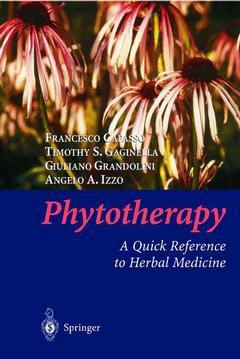Description
Phytotherapy, 1st ed. 2003
A Quick Reference to Herbal Medicine
Authors: Capasso Francesco, Gaginella Timothy S., Grandolini Giuliano, Izzo Angelo A.
Language: English
116.04 €
Subject to availability at the publisher.
Add to cartDescription
/li>Contents
/li>Biography
/li>Comment
/li>
This richly illustrated reference guide treats the subject of herbal medicines in an integrated fashion with reference to pharmacognosy, pharmacology and toxicology. It will help to enable internists, phytotherapists, physicians, healthcare practitioners as well as students to understand why, when and how herbal medicines can be used in the treatment of diseases. A great deal of pathology and therapeutic information is also included. Numerous tables as well as figures clarify complex mechanisms and other information. The most important medicinal plants and drugs are illustrated with exceptional color plates.
The authors are leading American and Italian scientists of Pharmacology and Pharmaceutical Technology who have for a long time researched the application of medicinal plants. They teach at the Universities of Wisconsin, Naples and Perugia.
Uniquely illustrated (4c plant photographs, many line drawings of mode of drug action)
Herbal formulas included
2c layout throughout
Comparison tables of all drugs for each indication
Handy, easy-to-use format
Well-structured chapters with rigid substructure
Strong focus on practice-oriented information, e.g. dosage, application, etc.
Covers 146 medicinal plants




